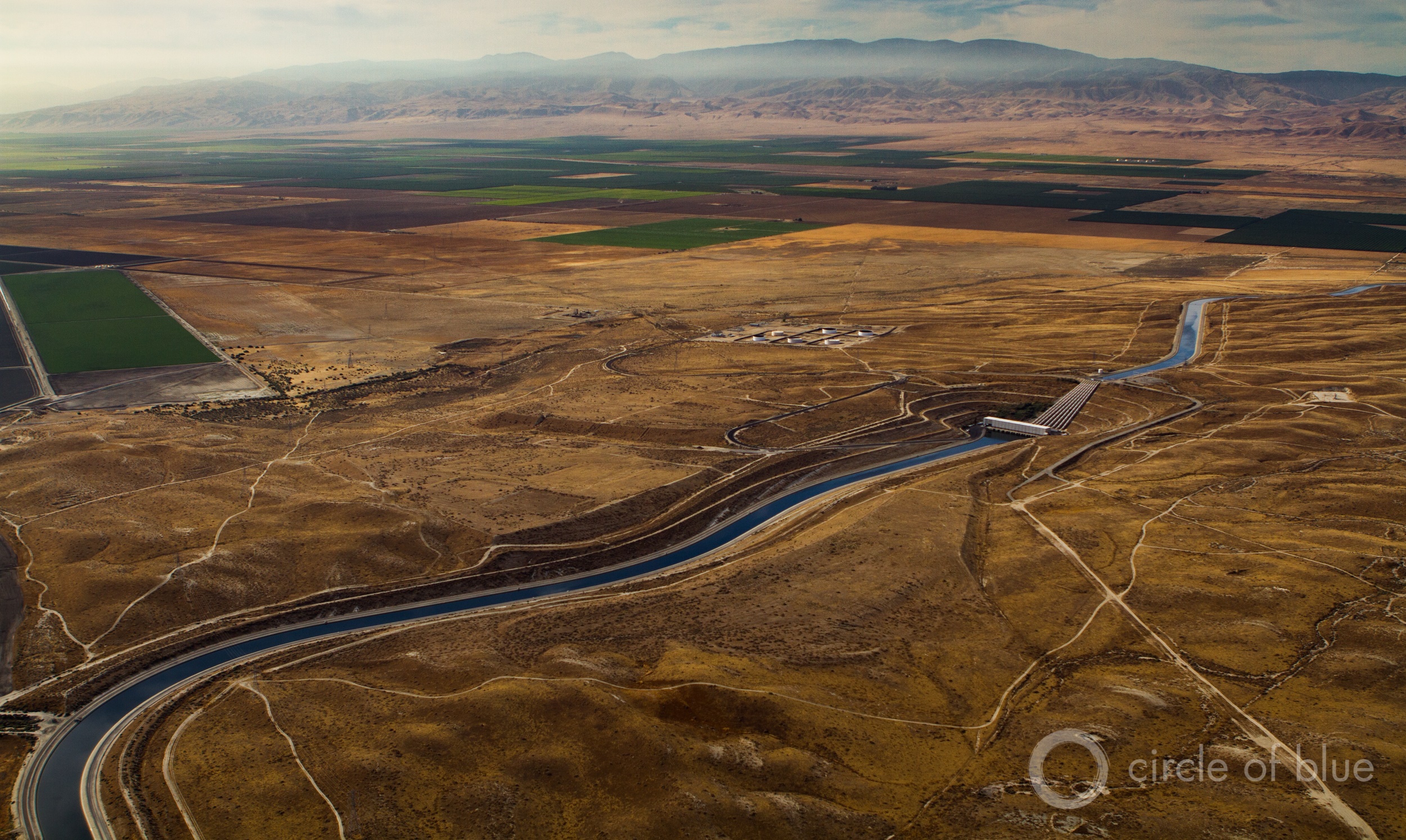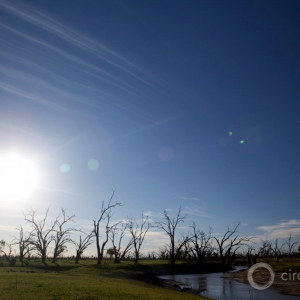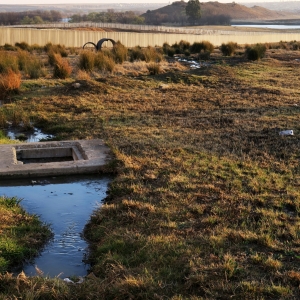The Stream, October 19, 2022: California City Approaches Water Supply Peril in Next Two Months

California’s Central Valley is the heart of the state’s farming and oil industries. Photo © J. Carl Ganter / Circle of Blue
YOUR GLOBAL RUNDOWN
- Cholera outbreak in Syria spreads across the country.
- Mississippi River reopens to barge traffic after low-water closure.
- Lack of water scuttles a proposed hydrogen facility in Australia.
- California town risks running out of water in two months as dry conditions persist.
- Sydney, Australia, in just over nine months, records highest annual rainfall since 1858.
The destruction from Hurricane Ian may push the price of home insurance – and thus home ownership – out of reach for many in Florida.
“You can’t just build in high-risk areas indefinitely and expect it to be insurable at an affordable rate.” – Zac J. Taylor, a professor at Delft University of Technology in the Netherlands.
Hurricane Ian, which struck Florida at the end of September, could end up being one of the most expensive disasters in U.S. history. One analyst estimates that privately insured losses largely from wind damage could be $67 billion, not including flood insurance claims. The New York Times reports that this damage will have a ripple effect for insurance and housing markets. Insurers may raise rates or pull out of the state. Inability to acquire insurance will, in turn, prevent home buyers from securing a mortgage. Whether home ownership becomes a privilege of the wealthy depends on state policy, the Times reports.
— Brett Walton, Interim Stream Editor
Recent WaterNews from Circle of Blue
- Mine Cleanup Law Weakened by Coal’s Decline — Reclamation is a flashpoint for the partisan divide over fossil fuels.
- In New Mexico, Partners Collaborate to End Siege from Megafires — Initiative in the Rio Grande basin intends to thwart catastrophic wildfires that wreck watersheds.
- Voices from the Drying Rio Grande — One of the West’s iconic waterways, the Rio Grande is under assault from a warming climate.
Drought in the American West
Severe drought in California is pinching the water supply for Coalinga, the Washington Post reports. Unless conditions change, the Central Valley city of 17,000 people will use up its water allocation from a federal canal by mid-December. City officials convinced the federal Bureau of Reclamation, which oversees the allocation, to increase water flows in August for health and safety reasons. They are once again making the request. If that fails, Coalinga could purchase water on the open market. But with supplies low across the state, market prices have soared. City officials say market-rate water is unaffordable for the high-poverty area.
Check out Circle of Blue’s drought coverage for more of the biggest headlines out of the drying American West.
This Week’s Top Water Stories, Told In Numbers
1858
Through just over nine months, Sydney, Australia, has already recorded its highest annual rainfall since record keeping began in 1858. More than 7 feet fell through the beginning of October, Reuters reports. In response to the immense rainfall the city is considering raising the Warragamba dam, source of 80 percent of its water. Raising the dam would help contain future floods, officials say.
13,059
That is the number of cholera cases recorded in Syria from the end of August through the first week of October, in an outbreak that now spans the country. It is Syria’s first outbreak of the waterborne pathogen since 2007. Social and political circumstances in Syria may have aided the outbreak. The country has experienced years of conflict, economic crises, and drought that have impaired its water and sanitation systems. The World Health Organization is monitoring conditions in temporary camps that house people who fled violence. Crowded conditions in the camps can make them a hotbed for infections.
On the Radar
Lack of water was the downfall of a proposed green hydrogen production facility in Australia. It may not be the only one to suffer that fate. Reuters reports that water constraints could trouble more firms that hope to develop the next generation of low-carbon hydrogen fuel for shipping, trucking, and steel production.
Hydrogen comes in many flavors. Green hydrogen, like the canceled Kallis Energy Investments project in Australia, uses renewable energy to split water into hydrogen and oxygen. Sourcing water for these projects — some 680 are under consideration globally — will be a challenge, and Reuters found little mention of the topic in company statements or industry white papers. Companies are considering a range of alternatives, each of which comes with substantial drawbacks. In dry coastal areas, desalinated water could provide supply. It is expensive, though, and generates a waste brine that requires disposal.
In context: In Climate Talks, Plans to Keep Planet from Overheating Should Not Ignore Water
The lower Mississippi River reopened to commercial traffic on October 10 after dredging operations deepened the river channel. The closure delayed more than a thousand barges, disrupting grain shipments and adding to supply chain troubles that have bedeviled the economy. Shipping charges approached historic highs as a sharp drought sapped water levels in America’s largest river system and its most important commercial waterway. Though dredgers are at work, the trouble isn’t over. Weather forecasts indicate continued dry weather, meaning the river could test its record low from 1988 by the end of the month.
More Water News
PFAS Pollution: Scientists say PFAS contamination should be presumed at over 57,000 sites.
Water Supply: Amid historic drought, California approves $140 million desalination plant.
Brett writes about agriculture, energy, infrastructure, and the politics and economics of water in the United States. He also writes the Federal Water Tap, Circle of Blue’s weekly digest of U.S. government water news. He is the winner of two Society of Environmental Journalists reporting awards, one of the top honors in American environmental journalism: first place for explanatory reporting for a series on septic system pollution in the United States(2016) and third place for beat reporting in a small market (2014). He received the Sierra Club’s Distinguished Service Award in 2018. Brett lives in Seattle, where he hikes the mountains and bakes pies. Contact Brett Walton






Leave a Reply
Want to join the discussion?Feel free to contribute!